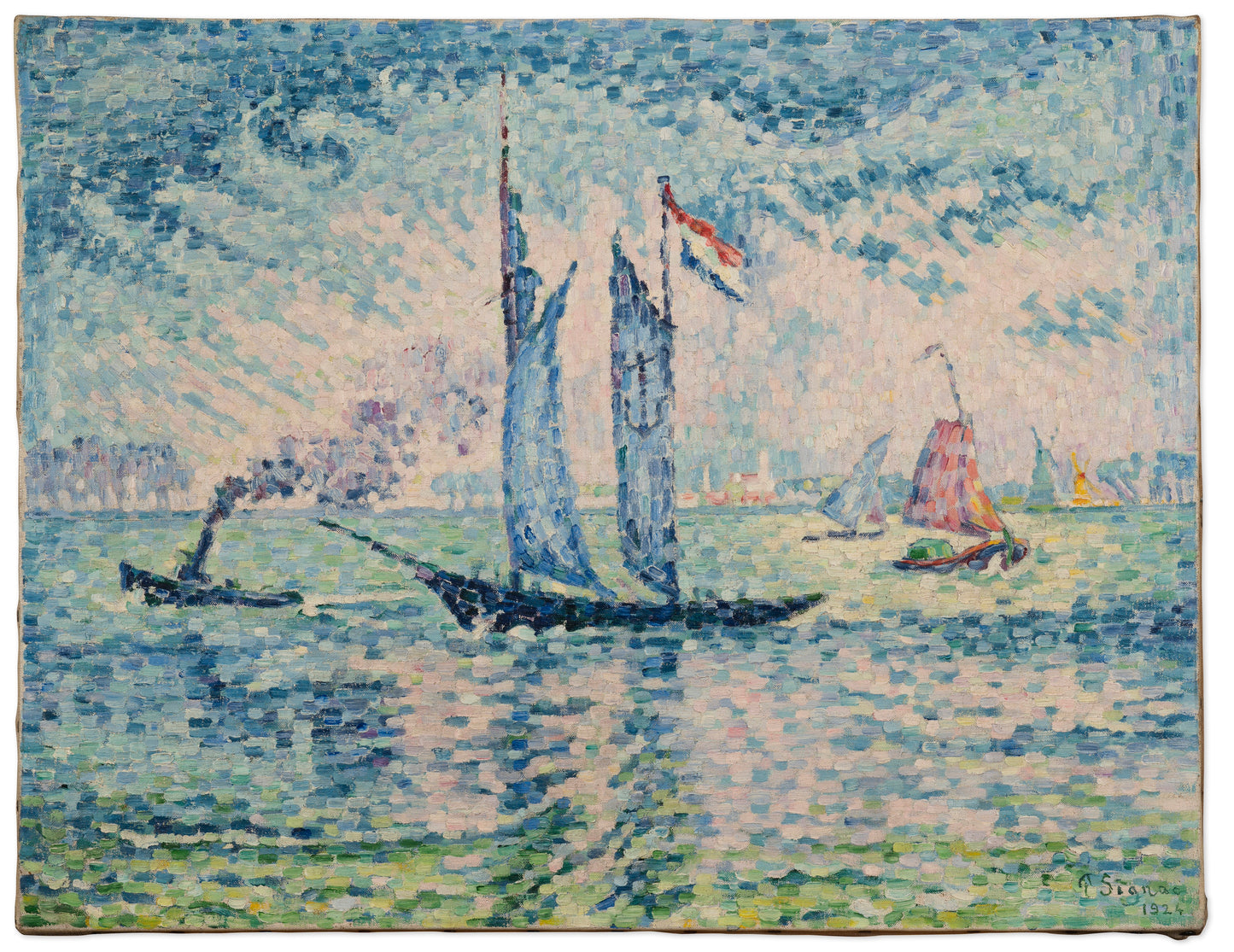Paul Signac was a central figure in the Neo-Impressionist movement and a key collaborator of Georges Seurat. Embracing the divisionist technique of pointillism (applying tiny, distinct dots of pure color to canvas). Signac advanced a vision of painting rooted in harmony, science, and light. His luminous compositions, often of ports, sailboats, and riversides, translated the fleeting experience of modern life into carefully orchestrated chromatic vibrations. A passionate anarchist and sailor, Signac found in nature both refuge and order, allowing his paintings to speak not only of aesthetics but of freedom.
Pilote de la Meuse (1924) exemplifies Signac’s mature style, in which his brushwork becomes more expressive while retaining the brilliance of his early pointillism. The work captures a tranquil moment along the Meuse River, yet beneath the serenity lies Signac’s devotion to structure and experimentation. Planes of color, built from mosaic like strokes, create a shimmering surface that elevates a humble scene into a peaceful landscape. The pilot figure becomes not just a navigator of the river, but a symbol of artistic direction, charting a course through chaos by means of color and rhythm.
Exhibited in major Parisian retrospectives (1930, 1934) and published in Françoise Cachin’s definitive Catalogue Raisonné, the work has a storied provenance, anchored in the Edmond Sussfeld Collection. It also stands in dialogue with Signac masterpieces in the Musée d’Orsay, MoMA, and the Art Institute of Chicago.
Pilote de la Meuse reflects Signac’s legacy as both artist and theorist: a painter of modern life who infused structure with sensation, and labor with lasting grace.


